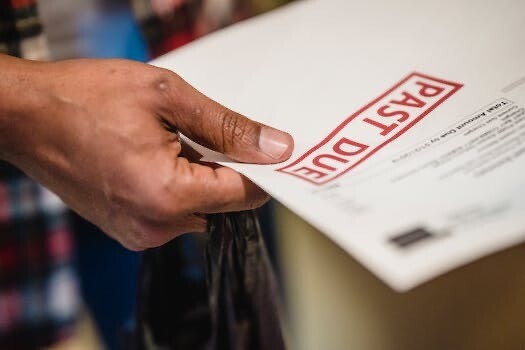A collection letter is an important tool for freelancers and small and medium-sized businesses (SMBs) to recover unpaid debts. When clients fail to pay for services or products rendered, it can significantly impact the cash flow and financial stability of freelancers and SMBs. Understanding the basics of a collection letter, including its purpose and significance, is crucial in effectively communicating with clients and increasing the chances of debt recovery.
Understanding the Basics of a Collection Letter
A collection letter is a formal written communication sent to clients who have outstanding debts. It serves as a reminder and a request for payment, emphasizing the importance and urgency of settling the debt. By sending a collection letter, freelancers and SMBs aim to refresh the client’s memory, prompt immediate action, and maintain a professional approach throughout the debt recovery process.
What is a Collection Letter?
A collection letter is a written notice delivered to clients who have fallen behind on their payments. It outlines the details of the outstanding debt, provides a payment deadline, and warns of potential legal actions if the debt remains unpaid. While some collection letters may adopt a more gentle tone, modifying their purpose to serve as a friendly reminder, others may take a firmer approach when dealing with chronic late payments.
When crafting a collection letter, it is essential to strike a balance between assertiveness and professionalism. The tone of the letter should reflect the severity of the situation while maintaining a respectful and courteous demeanor. This approach helps preserve the client relationship and increases the chances of successful debt recovery.
Furthermore, a collection letter should include specific details about the debt, such as the invoice number, amount owed, and the original due date. This level of transparency ensures that both parties are on the same page and minimizes any confusion or disputes regarding the outstanding balance.
Importance of a Collection Letter for Freelancers and SMBs
For freelancers and SMBs, collection letters play a crucial role in maintaining a healthy cash flow and preventing financial strain. These businesses often rely on prompt payment for their survival, making the collection letter an essential tool in reducing the number of unpaid invoices and minimizing the impact of non-payment on their operations.
By promptly addressing unpaid debts through a collection letter, freelancers and SMBs can allocate their resources more effectively. They can focus on delivering quality services to their clients instead of spending valuable time and energy chasing overdue payments. This proactive approach helps maintain a positive working relationship with clients and fosters a sense of mutual respect.
Moreover, sending a collection letter demonstrates professionalism and emphasizes the value that freelancers and SMBs place on their work. It conveys the message that they expect fair compensation for their services and that they are committed to upholding their financial agreements. This commitment to professionalism can enhance their reputation in the industry and attract potential clients who value timely payments and ethical business practices.
In conclusion, a collection letter serves as a powerful tool for freelancers and SMBs to address outstanding debts, maintain cash flow, and uphold professional standards. By understanding the basics of a collection letter and its importance, businesses can navigate the debt recovery process with confidence and increase their chances of successful resolution.
Essential Elements of a Collection Letter
Writing an effective collection letter requires attention to detail and a clear understanding of the key components that ensure its success in debt recovery. From crafting a professional header that sets the tone to including legal implications, each element of the collection letter contributes to its effectiveness in resolving the outstanding debt.
When it comes to debt recovery, communication is key. A well-written collection letter not only serves as a reminder to the debtor but also establishes a professional and assertive approach. Let’s explore some additional elements that can enhance the effectiveness of your collection letter.
Writing a Professional Header
The header of a collection letter should include the freelancer or SMB’s name, contact information, and the date of the letter. It sets a professional tone and conveys credibility to the recipient. The header should be easily identifiable and clearly distinguishable from the body of the letter.
Furthermore, consider adding your company logo or branding elements to the header. This not only adds a touch of professionalism but also reinforces your brand identity and helps the recipient recognize your business at a glance.
Addressing the Client Correctly
When addressing the client, it is essential to use their name and address accurately. Personalizing the collection letter helps establish a connection with the debtor and shows that their debt is being taken seriously. Additionally, addressing the recipient correctly reduces the likelihood of miscommunication or confusion.
Moreover, consider including a brief introduction or a personalized opening paragraph in the collection letter. This can help create a sense of empathy and understanding, showing the debtor that you are aware of their situation and willing to work towards a resolution.
Clear Statement of the Debt
The collection letter should provide a clear and concise statement of the debt, including the amount owed, the date of the invoice, and any relevant reference numbers. By clearly outlining the debt details, freelancers and SMBs minimize misunderstandings and create a basis for future communication regarding the payment.
In addition to the debt details, you may want to include a breakdown of the charges or services rendered. This can help the debtor understand how the outstanding amount was calculated and provide transparency, which is crucial in maintaining a positive relationship with your clients.
Setting a Payment Deadline
One critical element of a collection letter is setting a specific payment deadline. This deadline should be reasonable and allow the client sufficient time to fulfill their obligation. Clearly stating the payment deadline communicates urgency and emphasizes the consequences of failing to pay within the specified timeframe.
Consider adding a sense of urgency by highlighting any late fees or penalties that may be incurred if the payment is not made by the deadline. This can serve as a motivator for the debtor to take immediate action and settle the debt promptly.
Remember, the collection letter is just the first step in the debt recovery process. It is essential to follow up with consistent and polite communication to ensure a successful resolution. By incorporating these additional elements into your collection letter, you can increase the chances of recovering the outstanding debt while maintaining a professional and respectful approach.
Writing the Body of the Collection Letter
After covering the essential components of the collection letter, it is time to focus on the body of the letter. This section necessitates careful attention to maintaining a professional tone while effectively conveying the urgency of the debt and encouraging prompt payment.
When writing the body of a collection letter, it is important to consider various factors that can influence its effectiveness. Let’s explore some key aspects that should be taken into account.
Maintaining a Professional Tone
Throughout the collection letter, maintaining a professional tone is crucial to foster a constructive relationship with the client. Although the debt may cause frustration or financial strain, it is essential to approach the matter professionally and avoid any language or tone that may escalate the situation.
One way to maintain a professional tone is by using polite and respectful language. Address the recipient by their proper title and name, and avoid using derogatory or offensive terms. Remember, the goal is to encourage payment, not to create animosity.
In addition, it is important to keep the tone consistent throughout the letter. Avoid switching between a friendly and formal tone, as it can confuse the recipient and undermine the overall message. Consistency helps establish credibility and professionalism.
Being Clear and Concise
Clarity and conciseness are key when crafting the body of a collection letter. Clearly state the purpose of the letter, the amount outstanding, and the desired action. Avoid unnecessary information or complex language that may confuse or discourage the reader from taking the intended action of payment.
Consider using bullet points or numbered lists to highlight important details. This can make the information more digestible and easier to understand. Additionally, using headings or subheadings can help organize the content and make it more scannable for the recipient.
Furthermore, it is crucial to provide clear instructions on how to make the payment. Include details such as acceptable payment methods, due dates, and any additional information required to complete the transaction. This clarity will minimize any potential confusion and facilitate prompt payment.
Including Legal Implications
In some instances, it may be necessary to include a mention of potential legal actions in the collection letter. This serves as a reminder to the client about the consequences of non-payment and can prompt immediate action. However, it is crucial to ensure compliance with legal guidelines and consult with legal professionals when considering this approach.
When including legal implications, it is important to strike a balance between conveying the seriousness of the situation and maintaining a professional tone. Clearly state the potential consequences without resorting to threats or intimidation. It is essential to adhere to local laws and regulations to avoid any legal complications.
Remember, the inclusion of legal implications should be a last resort and used sparingly. It is always preferable to resolve the debt through amicable means rather than resorting to legal action.
By maintaining a professional tone, being clear and concise, and considering the inclusion of legal implications when necessary, the body of the collection letter can effectively communicate the urgency of the debt while encouraging prompt payment. These factors, when combined with the essential components of the collection letter, create a comprehensive and persuasive communication tool for debt recovery.
Finalizing and Sending the Collection Letter
Before sending out the collection letter, freelancers and SMBs should carefully review its content, choose the right time to send, and follow up after sending to increase the chances of debt recovery.
Reviewing the Letter
Prior to sending the collection letter, take the time to review it thoroughly. Check for any errors, ensure a consistent flow, and confirm that all essential details are included. A well-written and error-free letter strengthens the chances of successful debt recovery.
During the review process, it is crucial to pay attention to the tone of the letter. Striking the right balance between assertiveness and professionalism can make a significant impact on the recipient’s response. A polite yet firm approach can help maintain a positive business relationship while still conveying the urgency of the situation.
Additionally, consider personalizing the letter to make it more impactful. Addressing the recipient by name and referencing specific details about the outstanding debt can show that you have taken the time to understand their situation and are serious about resolving the issue.
Choosing the Right Time to Send
The timing of a collection letter can significantly impact its effectiveness. Consider factors such as the client’s payment history, the industry’s payment trends, and the age of the invoice. Sending the collection letter at the most opportune time increases the likelihood of prompt payment.
For example, if the client has a history of making late payments, it may be beneficial to send the collection letter a few days before the due date to serve as a reminder. On the other hand, if the client has a good payment record but has overlooked the invoice, sending the letter shortly after the due date can prompt them to take immediate action.
Timing can also be influenced by external factors. For instance, if the industry experiences a slow period where cash flow may be tight for many businesses, it might be wise to delay sending the collection letter until the situation improves. This approach shows empathy and understanding, increasing the chances of a positive response.
Following Up After Sending
After sending the collection letter, it is essential to follow up with the client. Continuously monitoring the progress of the outstanding debt, sending reminders, and initiating phone calls can further encourage payment and demonstrate professionalism.
When following up, it is crucial to maintain a respectful and persistent approach. Sending polite reminders at regular intervals can serve as gentle nudges to the client, reminding them of their obligation to settle the debt. However, it is essential to strike a balance between persistence and becoming overly aggressive, as this could strain the business relationship.
Consider utilizing various communication channels for follow-up, such as email, phone calls, and even in-person meetings if necessary. Each interaction provides an opportunity to reiterate the importance of resolving the outstanding debt while maintaining open lines of communication.
Furthermore, keeping detailed records of all follow-up attempts can be beneficial. This documentation can serve as evidence of your efforts to recover the debt, which may be useful in case further action, such as legal proceedings, becomes necessary.
In conclusion, writing a collection letter is an essential skill for freelancers and SMBs seeking to recover unpaid debts. By understanding the basics of a collection letter, emphasizing essential elements, and following proper procedures for finalization and sending, freelancers and SMBs can increase their chances of successful debt recovery and maintain a healthy cash flow.
Experience unrivaled service quality first-hand – use Genio at no cost, immediately. As a potential game-changer in invoice crafting, Genio goes beyond being a simple invoicing tool. Its comprehensive collection of over 300 customizable invoice templates caters to nearly all sectors. Five standout features include user-friendly navigation, secure payment options, adjustable templates, perfect platform compatibility, and superior customer service, setting it apart. Why wait? Elevate your business operations with Genio today.




